kottke.org posts about video games
I went to the newish Barcade in Chelsea last night to get some dinner and play Star Wars (and Ms. Pac-Man and Tetris and Donkey Kong) and discovered their tater tots are shaped like Tetris pieces:

ИOM ИOM ИOM. You can get these tots from a company called US Foods; they call them Puzzle Potatoes. Their sell sheet for the product is a wonder of corporate wishful thinking masquerading as marketing.
Here’s a menu item that will encourage kids to play with their food.
Yes! This is exactly what all parents want. Huge parental issue in America right now is that kids don’t play with their food enough.
When baked, these innovative Puzzle Potatoes are a fun and healthier alternative to regular fries…
Tater tots are not a health food. That’s the whole point. Also, aren’t regular fries also healthier when baked?
Puzzle potatoes are new innovative and interactive potatoes for kids.
Imagine the meeting. “Bob, what can we do about these smartphone? Kids just aren’t spending enough time with their potatoes anymore. Instead they’re Facebooking and Flappy Birding. Wait, I know… interactive potatoes!” [Cut to Bob being paraded around the office on his coworkers’ shoulders]
Our proprietary puzzle-piece shapes…
Well, someone else’s proprietary puzzle piece shapes, but why quibble with details?
Features & Benefits… 2D or 3D
I don’t. I can’t. What does that even mean? The sell sheet for these should be super simple: a photo of the tots and this caption in all-caps 120-point type: THEY’RE TATER TOTS SHAPED LIKE TETRIS PIECES! BUY THEM, YOU FOOL! (thx, kathryn)
Idleplex starts you off playing sheep pong and when you earn enough money from that, you can buy other mini-games which you can level up enough to play themselves, and then you become a manager of sorts of the games. The game’s creator, John Cooney, attempts to explain:
I approached this game wanting to return to simple game mechanics. In fact, I considered how simple game mechanics could go, with simple shapes and single-button mechanics controlling everything. After defining these simple mechanics, I wanted to let the games play themselves, and let the players focus on cultivating a mosaic of these moving pieces.
I love these types of games. (via waxy)
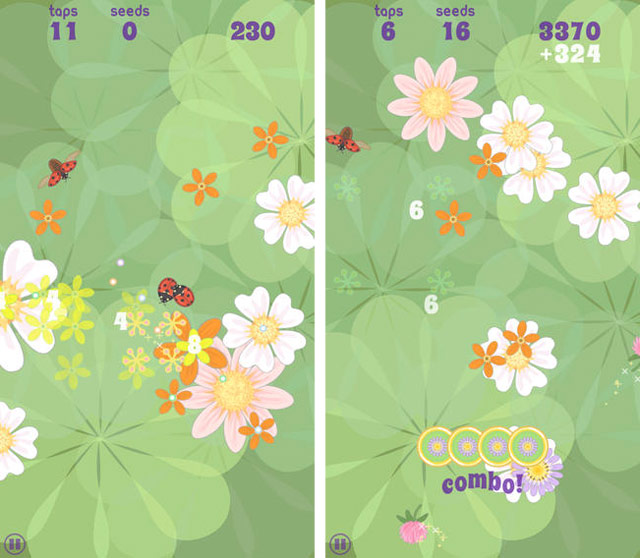
I don’t quite know how it happened, but I’m presently addicted to DaisyPop on my iPhone. The gameplay is pretty simple: various flowers and bugs float around the screen and you tap on things to pop them. Popping many things at once increases your score. Taps are limited but you get more the better you play. Unlike many other iOS games where frenetic tapping is rewarded, DaisyPop is a game of patience…waiting for several items to float close enough for the big scores can sometimes take a minute or two.
If you’ve played Monument Valley, a game so purty it won an Apple Design Award, you know the music is one of the best features of the game. Well, the original soundtrack for the game is now available for streaming on Spotify.
The soundtrack is also available to own on Amazon or iTunes.
(Oh, and while we’re at it, let’s take a moment to witness how nutty app pricing is. Monument Valley costs $3.99. The soundtrack, which is a just a part of the overall game, costs $8.99 at Amazon. And that makes sense how?)
Update: The Forgotten Shores add-on to the game also has its own soundtrack.
From the gaming laboratory at CERN (??!), Particle Clicker is like Cookie Clicker but about particle physics. As in, you actually learn about particle physics while you’re playing.

I am addicted to these damn things. Send help. (via waxy)
Meg Jayanth was asked to adapt Around the World in Eighty Days into a steampunk-y iOS adventure game. The only problem? She hated the book’s character Aouda, the English-imperialist-fantasy of an Indian princess who falls in love with Phineas Fogg. But what if “the damsel-in-distress is actually a sabre-wielding revolutionary leader, where she is not only not in need of rescuing, but in fact, sees herself as rescuer?”
This begs a larger question: is it possible to write a game in which your protagonist isn’t the hero? Or maybe, less provocatively: can you write a game in which your protagonist isn’t the only hero? …
[“80 Days” is] a world where the protagonist’s story of racing around the world isn’t necessarily the most important, or the most interesting one available to the player.
(via @robinsloan and @aaronissocial)
Occasionally I’ll go to my page of addictive Flash games to revisit some old favorites. I mostly play games on my phone now, but some of these are still pretty good. One of my absolute faves is a game called Cyclomaniacs, which I’ve played all the way through several times over the years. Last night I discovered there’s a Cyclomaniacs 2. So good.
Update: There is also Cyclomaniacs Epic and a one-off called Gregmaniacs. (via @ISeeFrants)
If you took all the fight scenes from Quentin Tarantino’s Kill Bill movies and turned them into a Double Dragon-esque video game, this is what it would look like:
(via devour)
You only get a single move in One-Tap Quest, so you had better make it a good one. This game has no right to be fun, but somehow it is. My top score so far is 15,800…the best score I’ve seen is 21,400. (via @mrgan)
In racing video games, a ghost is a car representing your best score that races with you around the track. This story of a son discovering and racing against his deceased father’s ghost car in an Xbox racing game will hit you right in the feels.

Update: This story was originally shared in the comments of a YouTube video about gaming as a spiritual experience. (via dpstyles & @ryankjohnson)
Update: See also this story about rediscovering a loved one’s presence (and presents) in Animal Crossing. (via @shauninman)
From Grantland, an excerpt from Console Wars, a new book by Blake J. Harris about the video game console battles of the 1990s between Nintendo and Sega. The excerpt is about the rise of Nintendo.
And just like that, the North American videogame industry ground to a halt. Hardware companies (like Atari) went bankrupt, software companies (like Sega) were sold for pennies on the dollar, and retailers (like Sears) vowed never to go into the business again. Meanwhile, Nintendo quietly glided through the bloody waters on a gorilla-shaped raft. The continuing cash flow from Donkey Kong enabled Arakawa, Stone, Judy, and Lincoln to dream of a new world order, one where NOA miraculously resurrected the industry and Nintendo reigned supreme. Not now, perhaps, but one day soon.
Harris is also working on a documentary based on the book. And Sony is making a “feature-film” adaptation of the book as well. Cool!
Update: Medium has another excerpt from the book.
Maybe this Sonic could sell in Japan, but in America he belonged inside a nightmare.
Kalinske got off the phone with Nakayama and took the fax to Madeline Schroeder’s office. “I have good news and I have scary news.” He handed her the artwork. “What do you think?”
She looked it over. “I think we’ll be the first videogame company whose core demographic is goths.”
“Nakayama loves it.”
“Of course he does,” she said. “It’s so weirdly Japanese. I’m surprised the girlfriend’s boobs aren’t hanging out of a schoolgirl outfit.”
Despite his sour mood, Kalinske laughed. “Her name is Madonna.”
Schroeder put the drawing on the desk. After a long silent inspection they both spoke at the same time, saying the exact same thing: “Can you fix it?”
Video game producers utilize music to keep you engaged, increase your achievement, and give you the energy to make it to the next level. So maybe you just found your ideal work soundtrack.
Karltorp has found that music from games he used to play as a kid, such as StarCraft, Street Fighter, and Final Fantasy, work best. Because the music is designed to foster achievement and help players get to the next level, it activates a similar “in it to win it” mentality while working, argues Karltorp. At the same time, it’s not too disruptive to your concentration. “It’s there in the background,” said Karltorp. “It doesn’t get too intrusive, it keeps you going, and usually stays on a positive tone, too, which I found is important.”
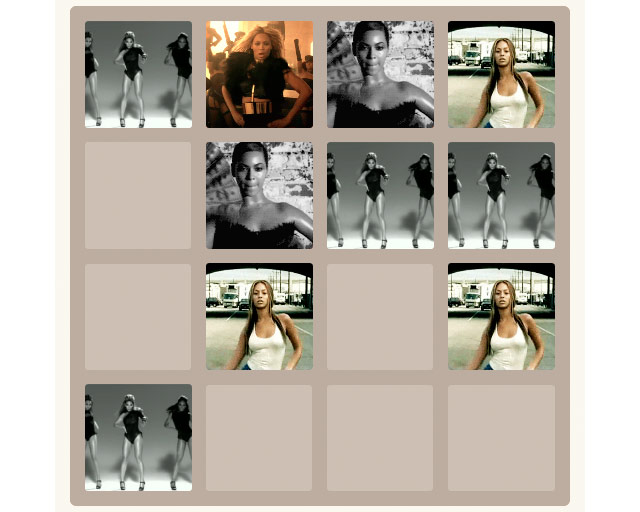
There are many versions of the game 2048 (which is itself a rip-off of Threes). There’s the original, a version that plays itself, a multiplayer version, a collaborative version, a doge version, a clever Flappy Bird version, the Numberwang version, one that uses only colors, a version that uses Dropbox to save progress and high scores, a hard version that actively works against you, a version where you add tiles to thwart an evil AI, and probably thousands of other versions.
But the best one is the one where each square is an animated GIF of Beyonce.
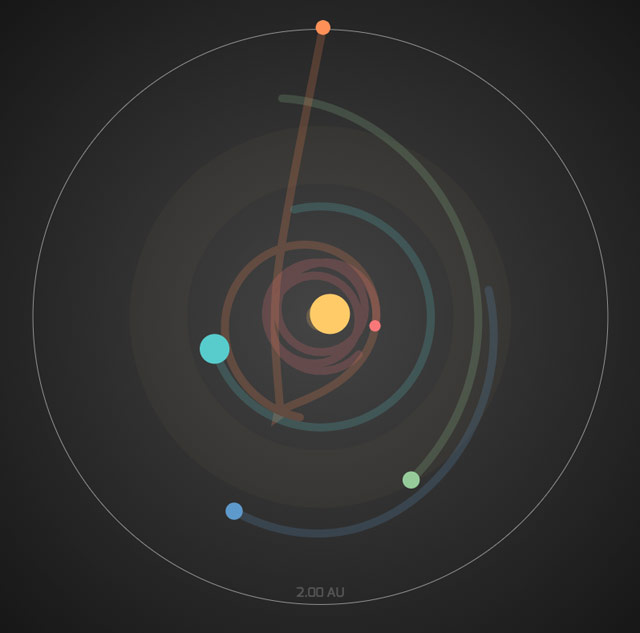
Super Planet Crash is half game, half planetary simulator in which you try to cram as much orbital mass into your solar system without making any of your planets zing off beyond the Kuiper belt. You get bonus points for crowding planets together and locating planets in the star’s habitability zone. Warning: I got lost in this for at least an hour the other day.
2008 article by Clive Thompson on how Weight Watchers is like a RPG (role playing game).
Think about it. As with an RPG, you roll a virtual character, manage your inventory and resources, and try to achieve a goal. Weight Watchers’ points function precisely like hit points; each bite of food does damage until you’ve used up your daily amount, so you sleep and start all over again. Play well and you level up — by losing weight! And the more you play it, the more you discover interesting combinations of the rules that aren’t apparent at first. Hey, if I eat a fruit-granola breakfast and an egg-and-romaine lunch, I’ll have enough points to survive a greasy hamburger dinner for a treat!
Even the Weight Watchers web tool is amazingly gamelike. It has the poke-around-and-see-what-happens elegance you see in really good RPG game screens. Accidentally snack on a candy bar and ruin your meal plan for the day? No worries: Just go into the database and see what spells — whoops, I mean foods — you can still use with your remaining points.
And those 35 extra points you get every week? They’re like a special buff or potion — a last-ditch save when you’re on the ropes.
It’s funny how quaint this seems now…the quantified self and gamification of diet & health is everywhere now. (via @arainert)
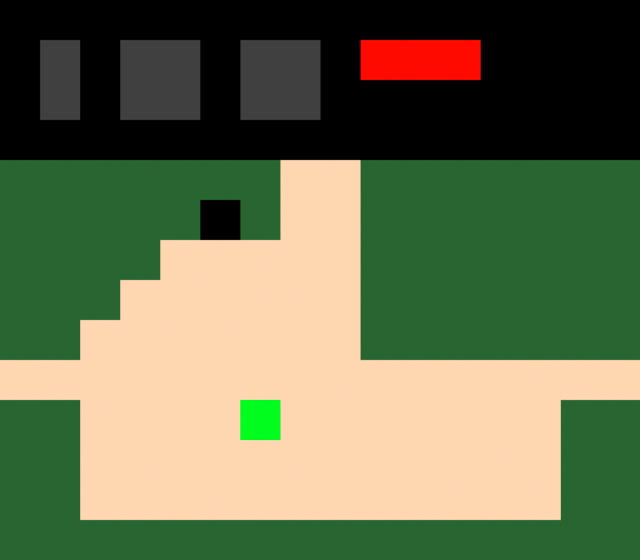
Whoa, Ben Purdy made a 16x16 pixel remake of The Legend of Zelda in 48 hours. Here’s how he did it.
Over the two days of work, I built the game from the map forward. What I mean is that my first goal was to get individual map pages rendering on screen. From there I moved on to the game manager component, building out the startup logic and render loop. This lead to the entity system, which in turn lead to the player entity. Once I had the player moving around I built code to check for collisions with obstacles in the map and changing the view when the player hits the edges of the screen. At this point you could explore the whole world map! It was pretty boring though.
Next I started making monsters and items for the player to interact with. Since I had common code to check for collisions, get lists of entities occupying particular squares, etc, the monsters weren’t terribly difficult to implement. The most time consuming part was getting the combat mechanics to a good place where it was challenging but not frustrating.
(via waxy)
Mini Metro is an upcoming game in the style of Sim City, except you’re only building subway lines.
Mini Metro is an upcoming minimalistic subway layout game. Your small city starts with only three unconnected stations. Your task is to draw routes between the stations to connect them with subway lines. Everything but the line layout is handled automatically; trains run along the lines as quickly as they can, and the commuters decide which trains to board and where to make transfers.
However the city is constantly growing, along with the transport needs of its population. How long can you keep the subway system running before it grinds to a halt?
Oh man, this is great fun for transportation nerds. Site says it’ll be out in “early 2014” for PC, Mac, Linux, iPad, and Android. You can play an early version on the site or d/l an alpha version for OS X, Windows, or Linux.
Update: A public transit planning consultant evaluates Mini Metro, which because of its simplicity, simulates the experience of transit network design quite well in some cases.
We have discovered the most realistic thing about Mini Metro: If you want to win, think of these “trains” as buses.
In real rail transit systems, you cannot simply abandon a rail line and build a new one — certainly not just to handle an overcrowding problem. But to do well in Mini Metro you must revise the network repeatedly, and the last phase of the game you’ll deploy lots of one-time-only temporary lines In fact, for best results, make sure you also have a spare tunnel, so that if you have to get a train quickly to a station on an island, you can build a temporary line to a destination across the water, deleting it after use.
To a rail engineer, all this is ridiculous, but to a transit network designer, it’s the game’s most realistic feature.
Build a subway line to run one train once, then tear it out? No, this is not how rail transit works, but it’s very much how buses work, and it’s good thing, too. That’s why buses provide a much better sandbox for network design thinking. When you build powerful networks with buses, mistakes cost thousands rather than billions, so they’re more likely to be repaired. Real-life transit networks do need to evolve, usually from radial beginnings to more gridlike structures.
(via @spavis)
The sheng is a free-reed wind instrument dating back to 1100 BCE in China. Using a modern sheng, Li-Jin Lee makes the ancient instrument sound remarkably like Super Mario Bros., including coin and power-up sounds.
And I know the Olympics are over and good riddance and all that, but this Mario Kart speedskating bit is great. Baby Park was one of my favorite tracks on Double Dash.
If you play carefully by not stomping enemies, not collecting coins, not eating mushrooms or flowers, and hopping on the flagpole at the very last second, you can rescue the princess in Super Mario Bros with only 500 points.
One bit is surprisingly tricky:
How tough is that jump in 8-1? Well, the timing of the liftoff, the duration of holding the jump button, and the timing of the wall jump are all frame perfect. NES games run at 60 frames per second, which means all the necessary inputs need to be timed within 1/60 of a second. In addition, the starting position before running I used not only has to be on the right pixel, but also the x sub-pixel has to fall within a certain range (technical stuff blah blah blah). In short, it’s a pretty annoying jump.
When I was a kid, I left my NES on for three straight days to flip the score in SMB, using the 1UP trick and another spot in the game to get many lives and points. Scoring lower would have been a lot quicker.
Your addiction to various things digital might be wasting a lot of your time. But it’s paying off in a big way for companies like King Digital Entertainment, the folks behind the wildly popular Candy Crush Saga. King just announced plans for an IPO. Can a company with one very big hit really go public? On one hand, consider this: “Of the 5000 companies in NASDAQ, only 6 have as much revenue ($1.88b) and fat profit margins (30%) as King.” On the other hand, it’s tough to stay on top in the hit-driven game industry. Want to invest in this IPO? First, you need to consider how long King will wear the crown.
Candy Crush Saga really has created some incredible numbers.
Flappy Bird Space Program is my favorite Flappy Bird riff yet. Instead of maneuvering through pipes, the object is to get as many birds as you can orbiting a tiny planet.
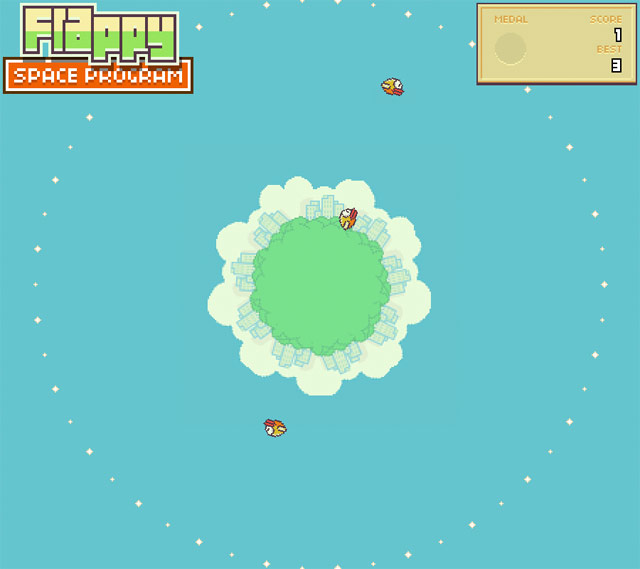
Love how the demise of this game has prompted such a burst of creative exploration of simple game mechanics. Flowers growing in Flappy Bird compost.
This is way more fun that regular Flappy Bird.
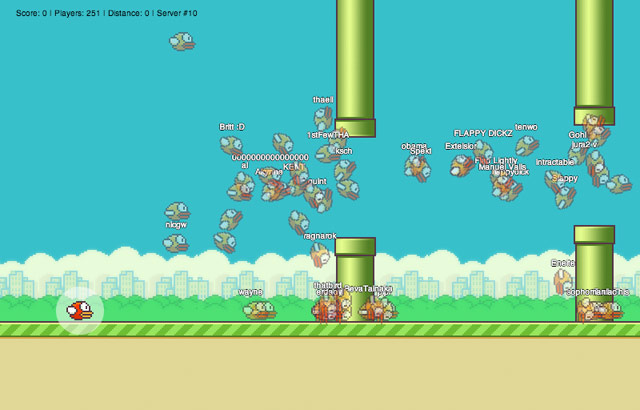
Would love to see a realtime graph of the distribution of scores for the last 1000 players or so. (My current high: 3 4! [Also, the second I put this post up, the server went down. :( ] I’m the guy repeatedly dying at the first pipe.)
100 years ago, Charlie Chaplin put on some floppy shoes, oversized trousers, a bowler, a mustache and became The Tramp. Within a year or two, he was internationally famous and in two years, he was making $670,000/year, an unprecedented figure in those days.
“It was amazingly fast,” says David Robinson, a film critic who has written a definitive biography of Chaplin (His Life and Art) and is giving an already sold-out talk titled “100 Years of the Tramp” at the festival. “By mid-1914 he was already popular. By 1915 he was international. The speed with which it happened, without the modern media, is astonishing.”
50 years ago, The Beatles were virtually unknown in the US and then, less than a year later, the largest TV audience in history watched them perform on the Ed Sullivan Show.
Consider the following: At the end of 1963, virtually no one in America had heard of the Beatles. Yet on Feb. 9, 1964, they drew the largest TV audience in history — 73 million viewers — when they appeared on “The Ed Sullivan Show.” How could such a conquest have occurred so quickly? I once asked my friend Lenny Kaye that question, and he answered: “Everybody was ready for the ’60s to begin.” There’s some truth to that, but of course there’s much more to the story. The explosion of the Beatles in America was the result of combined forces — artistic, social and technological — as well as persistence, showbiz rivalries and more than a bit of luck. So how did it happen that the Beatles came out of nowhere to become the biggest cultural sensation ever, in six weeks?
This year, an iOS & Android game called Flappy Bird, that was originally released in 2013, suddenly rocketed to the top of the App Store bestseller list. (Seriously, look at how quickly it got popular.) The developer, Dong Nguyen, revealed in an interview with The Verge that the game was making $50,000 a day on ads. He’s since made the game unavailable for download.
On February 1st, reviews exploded to 800 in a single hour. 6,500 iTunes App Store reviews in a single day. February 1st is the day Dong Nguyen woke up, stretched, checked email, checked Twitter, checked iTunes, and witnessed millions of downloads happening.
Millions.
You can only imagine what that must have felt like.
This is the same app no one cared about for more than half a year. Just one month prior, it was a great day if Flappy Bird got 20 total reviews on the App Store. Up until January 9th, there had never been an hour in which Flappy Bird received even 10 reviews (most of the time it was under 5).
Think you can distinguish between 80 of the world’s most spoken languages? Play the Great Language Game and find out. (Oof, I am bad at this.)
Oliver Emberton wrote a strategy guide for real life as if it were a video game.
You might not realise, but real life is a game of strategy. There are some fun mini-games — like dancing, driving, running, and sex — but the key to winning is simply managing your resources.
Most importantly, successful players put their time into the right things. Later in the game money comes into play, but your top priority should always be mastering where your time goes.
Jon Bois attempted to create the most lopsided game ever in Madden NFL on his Xbox. He beefed up the players on one team (7’0”, 440 lbs, good at everything) and put a bunch of scrubs on the other team (5’0”, 160 lbs, bad at everything). He started playing and was on pace to score more than 1500 points when…
With just under two minutes left in the first quarter, I was winning 366 to zero. I realized that I was on pace to score 1,500 points in a single game. I had never conceived of such a high score. I’d never even heard anyone talk idly about such a thing. There was absolutely nothing the Broncos could do to slow down my pace. I could score just as surely as someone can point and click. It was great. I wanted to ruin Madden in a way I never had before, and I was doing it.
And then it happened. Before I tell you what happened next, I want to lay out a couple of things: first, I made no actual hacks to this game. I didn’t have some special jailbroken Xbox, nor a special copy of Madden, nor anything like that. I bought my Xbox at Target and bought my copy of Madden off Amazon, and that’s that. Second, I stake whatever journalistic integrity I have upon the statement that I didn’t Photoshop any of this, and that it happened just as I say it did.
This is LOL funny in several places…particularly the GIFs. (via @delfuego)
Coinbox Hero and Cookie Clicker both break the idea of the video game down into the bare essentials: perform an action to get points, use points to power up, repeat. They’re games that show you how games work. (See also Cow Clicker.)
In Cookie Clicker, you click to make cookies until you have enough cookies to hire a cursor to click for you and eventually you get enough points to buy cookie mines, time machines, and antimatter condensers capable of generating millions of cookies a second. There doesn’t seem to be a goal per se…presumably you can keep upgrading until you’re generating trillions of cookies a minute. It’s like Bitcoin except with cookies.
In Coinbox Hero, you start similarly, jumping into a Super Mario-esque coinbox to get coins to buy workers to collect more coins for you. Unlike Cookie Clicker, there’s a clear objective: earn 1,000,000 points to buy a device that will destroy the coinbox.
I found both of these games very satisfying to play, which suggests that a significant amount of my enjoyment of games derives not from the gameplay but from the amassing wealth and power, which, man, I guess I have something to talk to my therapist about this week. (via waxy)
The Hyperkin RetroN 5 is a retro gaming system that plays all your favorite games from NES, SNES, Super Famicom, Genesis, Mega Drive, Famicom, Game Boy, Game Boy Color, and GBA cartridges. I haven’t heard anything about this (is it any good?), but I’ve got a lot of old games I’d like to play on it, starting with NHL ‘94. Pre-order at Amazon for $99. (via @cabel)
Watch as people review video games after eating hot peppers. Here’s Erin Schmalfeld reviewing a Nintendo 3DS game after chewing and swallowing an entire habanero:
(via ★interesting)
Newer posts
Older posts








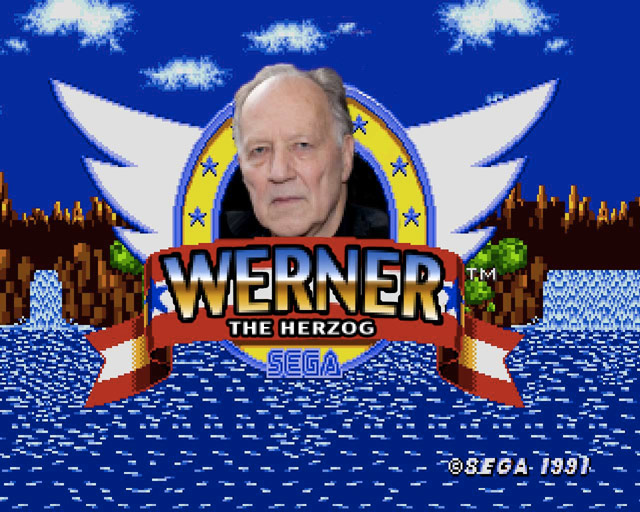






Stay Connected